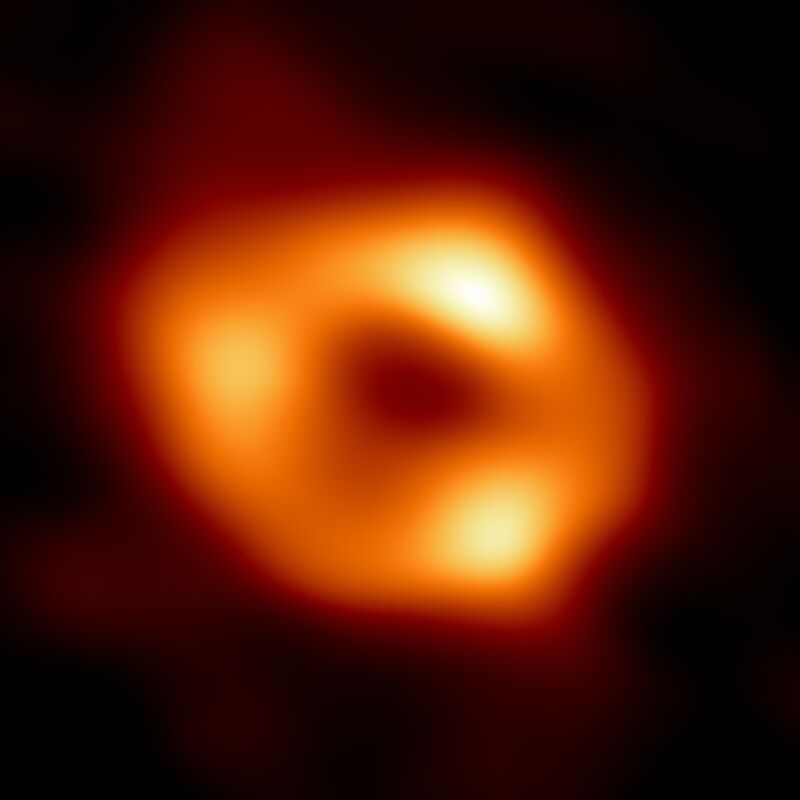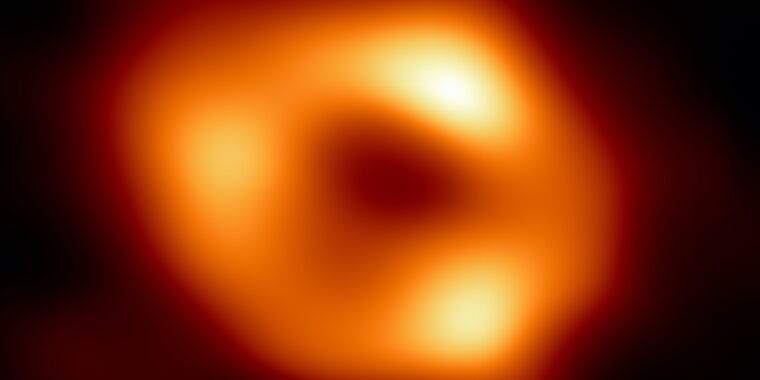
EHT Collaboration
It’s probably unrealistic to call a supermassive black hole “silent.” But as far as these things go, the one at the center of our galaxy is pretty quiet. Yes, it puts out enough energy for us to imagine, and it occasionally gets a little more active when it rips something nearby to shreds. But supermassive black holes in other galaxies power some of the brightest phenomena in the Universe. The object at the center of the Milky Way, Sgr A*, is nothing like that; instead, people get excited at the mere prospect that it might awaken from its apparent slumber.
There’s a chance it was more active in the past, but light from previous events passed by Earth before we had observatories to see it. Now, however, scientists suggest they’ve seen echoes of light that may be related to a Sgr A* eruption that occurred about 200 years ago.
Looking for echoes
Audible echoes are simply the product of sound waves bouncing off a surface. Light also travels as a wave and can be reflected off objects. So the basic idea of light echoes is a fairly simple extrapolation of these ideas. They may seem counterintuitive because, unlike sonic echoes, we never experience light echoes in normal life – light travels so fast that all the echoes from the world around us arrive at the same time as light itself. It all becomes indistinguishable from each other.
That is not the case at astronomical distances. Here, light can take decades to travel the distances between a source and a reflecting object, giving us a glimpse of the past. The challenge is that in many cases, the objects that could reflect light from elsewhere often produce light themselves. So we need a way to distinguish reflected light from other sources.
sergeant a* is surrounded by a number of clouds of material that emit light and are a potential source of reflections. But the two sources should be different in their polarization. And we happen to have an instrument in orbit, the Imaging X-ray Polarimetry Explorer, which is capable (as the name implies) of figuring out the polarization of X-ray photons. The researchers combined that with images taken by the Chandra X-ray Observatory, which provided high-resolution images of all the glowing material near the core of our galaxy.
The resulting data was a mix of constant sources – the X-ray background, plus the emissions from the clouds of material themselves – plus reflections of light produced by the nearby Sgr A*, which may vary over time. So the astronomers built a model that took everything into account, including multiple observations over time and the polarization information.
Right place right time
The net result of the model is a polarization angle consistent with one of the sources of X-rays reflected from a source on Sgr A*. (You would expect that Sgr A* to produce an angle of -42 degrees, while the model indicates that the source should be between -37 and -59 degrees.) It also provided information about the timing of the flash of light being reflected, indicating that it was consistent with an event that happened 30 or 200 years ago.
But, as the researchers helpfully point out, we had observatories that would have noticed something if it had happened 30 years ago. So they strongly favor 200 years as the likely timing.
The flare was probably short-lived, in astronomical terms. Based on the limits of how much material would likely flow into Sgr A*, the researchers calculate that a low-light event could potentially produce these light echoes for one to two years. If the inflow was close to the maximum amount, then Sgr A* could produce enough energy in just a few hours.
That kind of behavior is consistent with how black holes seem to work. Their brightness – technically the brightness driven by the energy they give to the material immediately nearby – depends largely on how much material they are ingesting at the time. If the Milky Way’s black hole is currently silent, it is simply because there is nothing to eat at the moment. But there’s no reason to assume that’s always been the case.
Nature, 2023. DOI: 10.1038/s41586-023-06064-x (About DOIs).

